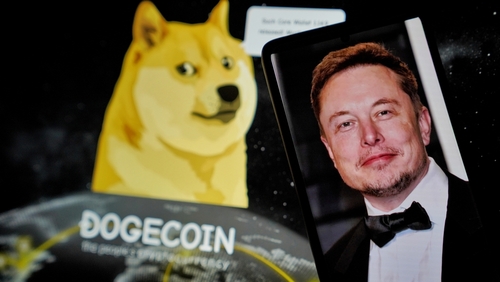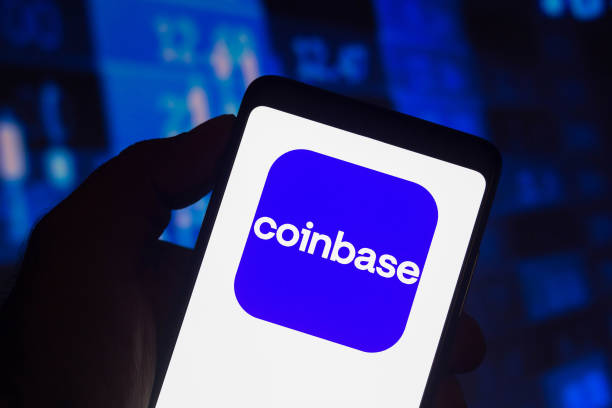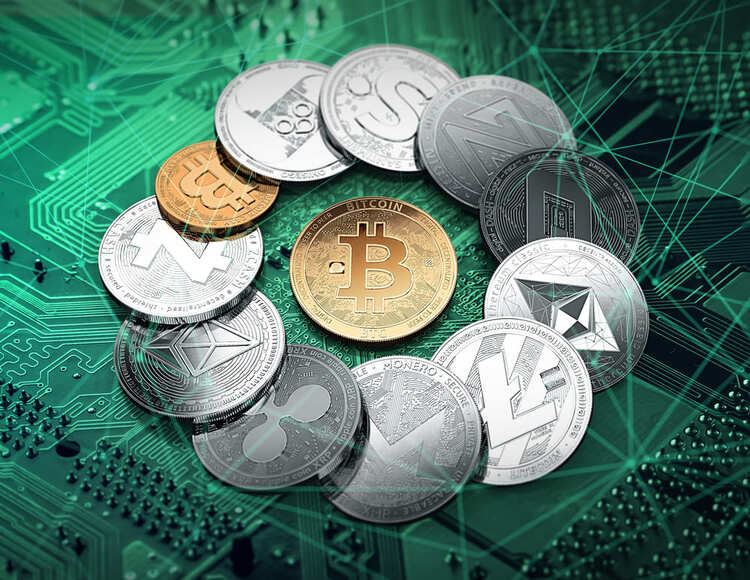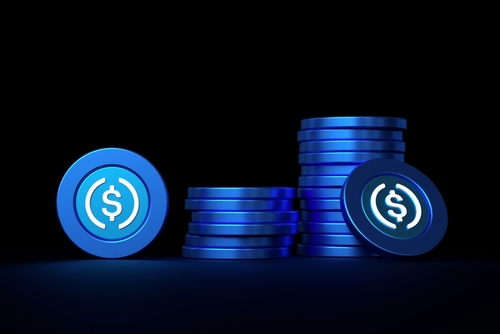Understanding Token Burning: Why Crypto Projects Destroy Their Own Coins

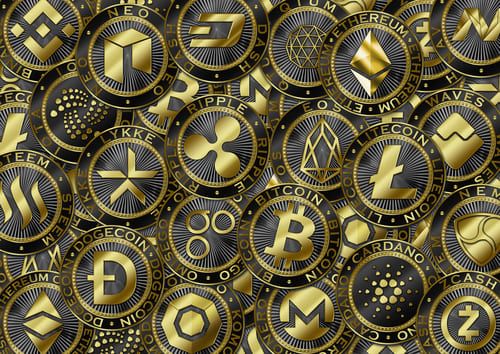
Introduction
TradingKey - On August 13, 2025, global crypto exchange OKX announced the permanent burn of over 65 million OKB tokens, reducing its total supply to 21 million — a move that sent OKB’s price soaring over 200% in a single day. The announcement sparked investor interest in token burn strategies and their impact on price, scarcity, and project credibility.
This article explores the definition, mechanics, motivations, and real-world examples of token burning in the crypto economy.
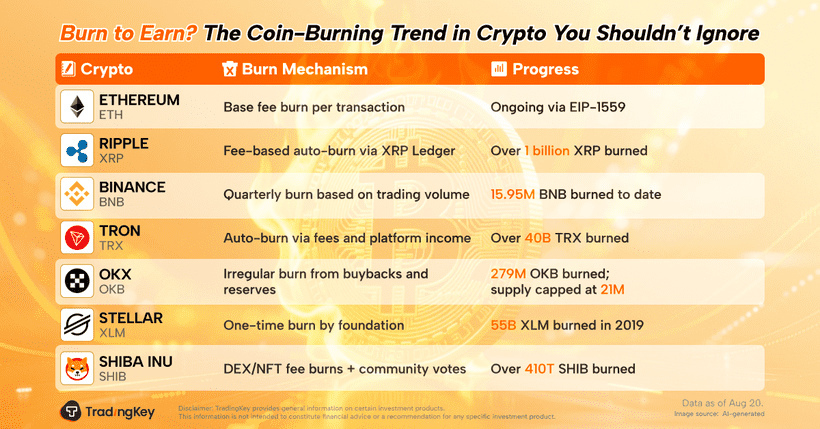
What Is Token Burning?
Token burning is the permanent removal of cryptocurrency from circulation, similar to stock buybacks in traditional finance. Tokens are sent to a “burn address” or “blackhole address” — wallets with no private key access — making them unrecoverable and unusable.
Here’s how token burns differ from stock buybacks:
Feature | Token Burn | Stock Buyback |
Reversibility | Irreversible; tokens are permanently lost | Can be reissued with board approval |
Transparency | On-chain and publicly verifiable | Disclosed in financial reports |
Execution Cost | Minimal (just gas fees) | Broker fees (0.1–0.3%) |
Speed | Instant (block confirmation) | Weeks to months |
Types of Token Burns
Token burns can be classified by intent, automation, and timing:
Category | Type | Description |
Intent | Voluntary vs. Accidental | Project-led vs. user mistakes or lost keys |
Automation | Manual vs. Smart Contract | Human-triggered vs. automated under conditions |
Timing | One-time, Scheduled, Irregular | Examples: TRX (one-time), BNB (quarterly), OKB (irregular) |
Other burn mechanisms include:
- Revenue-based burns
- Transaction fee burns
- Staking reward burns
- Governance-triggered burns
- Cross-chain bridge burns
- Token upgrade burns
How to Verify a Real Burn
To avoid falling for “fake burns” (e.g., SafeMoon, BitConnect), investors should verify:
Criteria | How to Check |
Sent to burn address | Use Etherscan or BscScan to confirm transfer to 0x000… or 0xdead… |
No retrieval possible | Check for zero outbound transactions |
Supply reduction | Use CoinMarketCap, CoinGecko, or Token Terminal |
Public transaction hash | Review transfer details and destination |
Community auditability | Monitor Reddit, X, Discord for transparency |
Third-party audit | Look for reports from CertiK, SlowMist, etc. |
Why Do Projects Burn Tokens
Token burning serves multiple strategic purposes:
Motivation | Market Impact |
Reduce supply, increase scarcity | Deflationary pressure, price support |
Reward holders and boost loyalty | Strengthens community engagement |
Reflect project revenue | Aligns token value with business performance |
Control inflation | Stabilizes token economy |
Signal commitment and transparency | Builds trust with investors |
Generate media buzz | Attracts speculative capital and liquidity |
Notable Projects That Burn Tokens
Project | Burn Mechanism | Progress |
Ethereum (ETH) | Base fee burn per transaction | Ongoing via EIP-1559 |
Ripple (XRP) | Fee-based auto-burn via XRP Ledger | Over 1 billion XRP burned |
Binance (BNB) | Quarterly burn based on trading volume | 15.95M BNB burned to date |
TRON (TRX) | Auto-burn via fees and platform income | Over 40B TRX burned |
OKX (OKB) | Irregular burn from buybacks and reserves | 279M OKB burned; supply capped at 21M |
Stellar (XLM) | One-time burn by foundation | 55B XLM burned in 2019 |
Shiba Inu (SHIB) | DEX/NFT fee burns + community votes | Over 410T SHIB burned |
Conclusion
Token burning is a powerful tool for managing supply, incentivizing holders, and signaling project integrity. When executed transparently and strategically, it can enhance value and trust. For investors, understanding the logic and mechanics behind token burns is essential for evaluating a project’s long-term sustainability.


